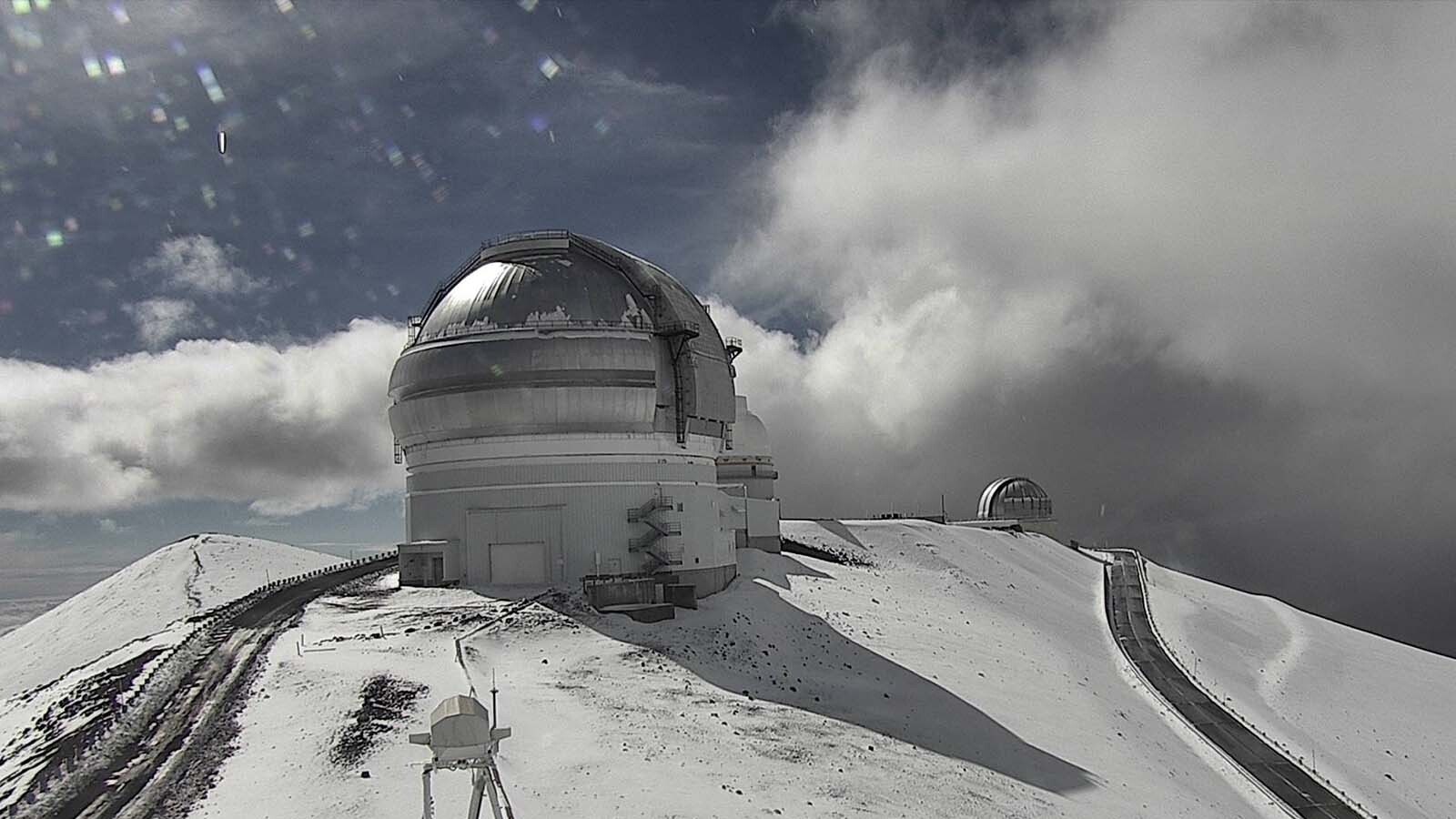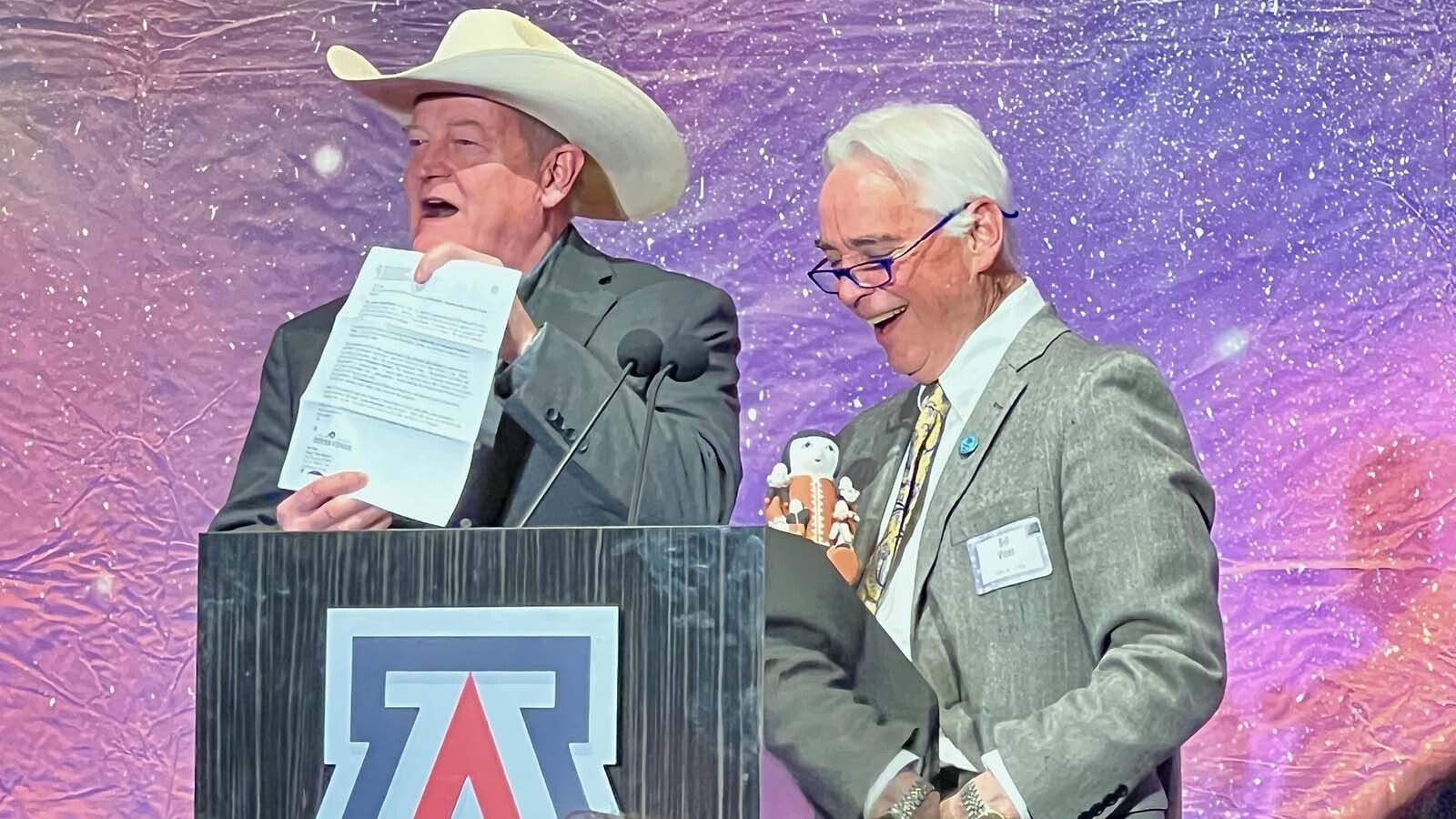When Dean Sherman got the photos of a new specimen found in one of the famous fossil quarries near Kemmerer, Wyoming, he immediately dropped what he was doing and rushed to the site.
“I knew exactly what it was as soon as I got the picture,” he told Cowboy State Daily. “I was like, ‘Oh my gosh, that's a salamander. That has to be a salamander.’”
Sherman, the owner of In Stone Fossils, has found thousands of incredible fossils from the Green River Formation. But the foot-long salamander he saw in that photo is a new milestone personally, professionally and paleontologically.
“In 20 years-plus of digging experience, I've never discovered anything even remotely like it,” he said. “It's definitely a one-of-a-kind piece.”
Special Soft Salamander
While the Green River Formation is one of the most fossiliferous rock formations in the world, the National Park Service says amphibian fossils are “extremely uncommon.” Dave Dilworth, one of In Stone Fossils’ employees, found the fossil while excavating a new layer in an existing quarry that had already produced several incredible Green River discoveries.
Sherman identified the specimen as a Paleoamphiuma, an omnivorous salamander that lived around 52 million years ago. It’s only the third specimen of the prehistoric amphibian ever found.
“We know for a fact that we have the skull, at least two appendages in the front, and the back two appendages that to be laying over on top of each other on one side of the specimen,” he said. “The only thing missing is a little bit of the tail.”
What’s especially exciting is that there are telltale signs of soft-tissue preservation. Sherman could tell by the “halo” surrounding the specimen.
“The halo around the fossil is a visual sign that there's skin around the specimen itself,” he said. “That would be the first Paleoamphiuma ever found with soft tissue preservation.”
No Place Like Home
The salamander's scientific implications are exciting enough, but that’s not everything exciting about the fossil’s future. This important Cowboy State fossil is staying in Wyoming, now and forever.
Sherman explained that the quarry where the salamander was found is on a parcel of land In Stone Fossils is leasing from the state of Wyoming. That means the fossil belongs to, and will ultimately reside in, Wyoming.
“When a rare (fossil) is discovered in a state quarry, it will go into the repository of the state of Wyoming,” he said. “When it’s prepared, it could be displayed at the Wyoming State Museum or somewhere else, but it’s in public retention. The state of Wyoming will have ownership of it.”
Fossils from the Wyoming deposits of the Green River Formation are crown jewels in museums around the globe. A first-of-its-kind mouse bird found by In Stone Fossils in a private quarry in Kemmerer was recently donated to the Field Museum of Natural History in Chicago.
The newly discovered salamander may go out of state temporarily for research and display at other institutions, but it will never be gone forever. The Wyoming salamander will always come home.

Hours And Years Ahead
The salamander was fully excavated on the same day it was found. It’s in the possession of In Stone Fossils and will remain there for the foreseeable future.
Even though the rare fossil belongs to the people of Wyoming, they won’t be able to see it for a long time. There are hundreds of hours and many years between the fossil’s discovery and its public debut.
“It's sitting in limbo right now,” he said. “It will be distributed to the state of Wyoming soon, but I've seen things put into a cabinet for a long period of time.”
The state will have to find money to prepare the fossil, a meticulous process where the rock must be removed without damaging the delicate bones. Sherman estimated that hundreds of hours of preparation would be needed to fully reveal the salamander.
“You're looking at probably 200-plus hours of preparation on the specimen alone, and it (could) easily exceed that,” he said. “I don't know what funding Wyoming has for a project like this.”
When the funding is available, a bidding process will open for the fossil’s preparation. That could be when the fossil takes a temporary trip out of state to be worked on by a professional preparator.
Sherman has won bids to prepare several fossils for the state of Wyoming, but he’ll probably pass on prepping the salamander. He’s still in the midst of a much larger project, preparing a massive and immaculately preserved crocodile.
“The crocodile is the priority for us,” he said. “With the projects in front of us, I don’t believe I would want to bid on this particular one.”
Sherman isn’t sure how long it’ll be before Wyomingites see their salamander's full grandeur. Regardless, they’ll need to be patient.
“I've seen things put into a cabinet for years before the funding was available to do the preparation and put it on display,” he said. “It’s all funding.”

A Fossiliferous Future
The remarkable fossil salamander is the first fossil found in a previously untouched layer in the Kemmerer quarry. It’s an early indication that the layer has much more to offer than previously believed, and more 52 million-year-old secrets are emerging from the rock.
“We just discovered a bulb-like plant attached to a flower today,” he said. “We work with a paleobotanist at the Field Museum who will be out here in less than a month, and some of this information is very important to his studies. This kind of plant material from the Green River Formation hasn't been highly studied.”
Better yet, all the fossils in the layer are within the state lease. Whatever Sherman and his team find, it’ll belong to Wyoming.
“The quarry’s been active for a while, but nobody's dug this layer,” he said. “Many people didn't know there was this vast amount of material in it, but we’re finding some pretty interesting things already.”
Even so, it’ll be hard to top the discovery of the third-of-its-kind soft-tissue salamander.
“We’re really proud to have it in public retention in Wyoming,” Sherman said. “It’ll be there for future scientists to study.”
Andrew Rossi can be reached at arossi@cowboystatedaily.com.





